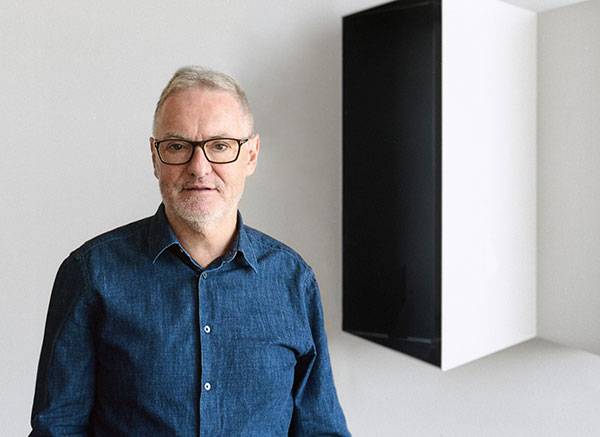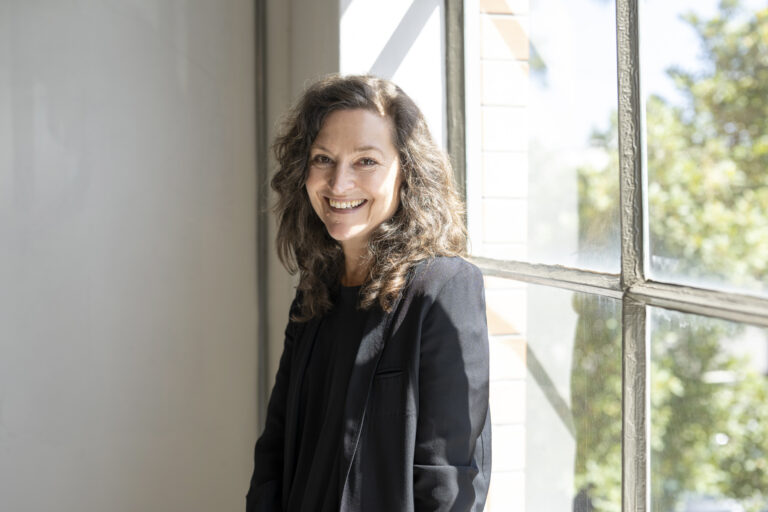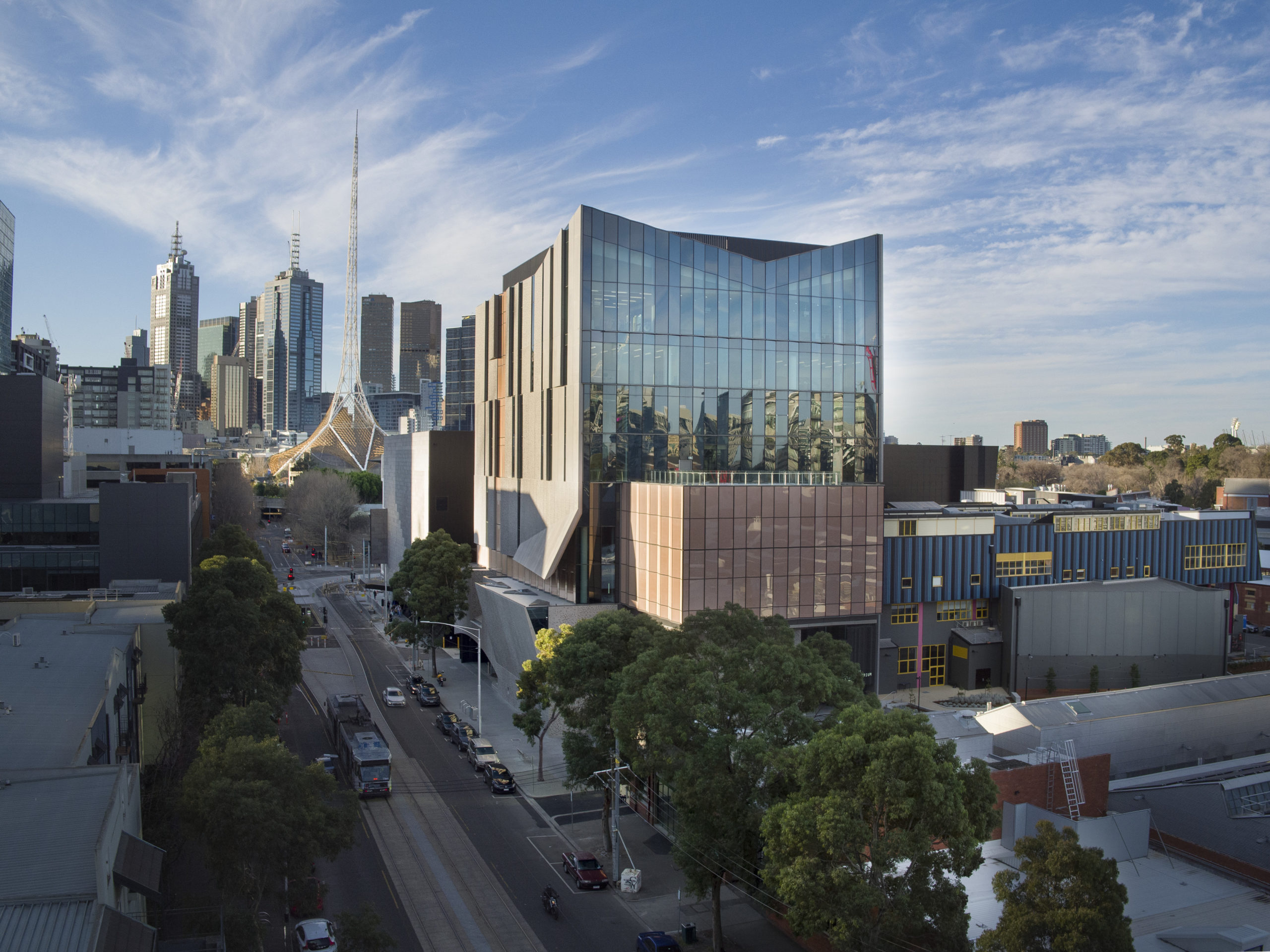Gold Medal
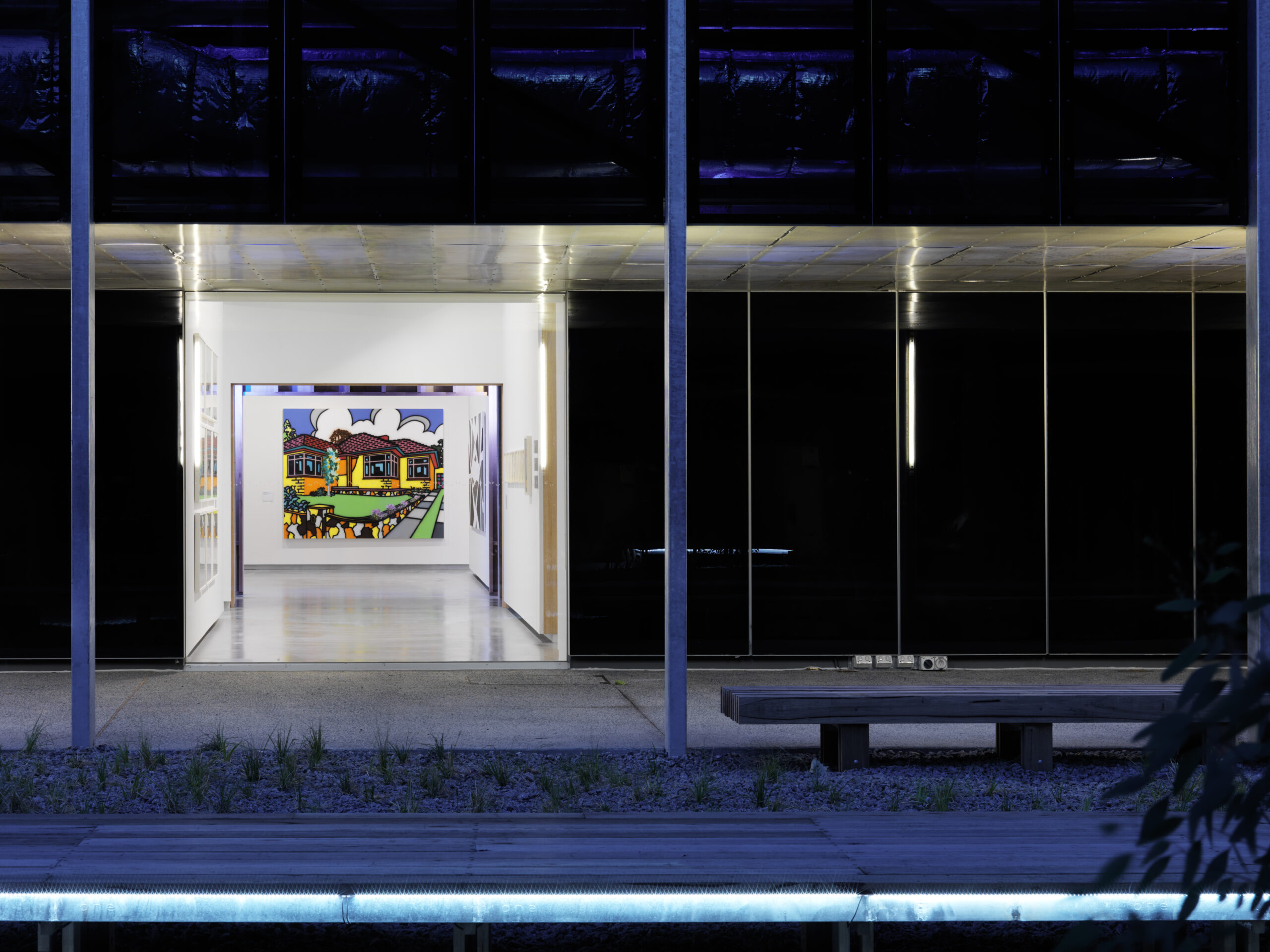
About the Gold Medal
Entries for the 2025 gold medal OPEN 1 FEbruary 2024.
TO NOMINATE, PLEASE CONTACT YOUR LOCAL CHAPTER. ENTRIES ARE OPEN FROM 1 FEBRUARY UNTIL 31 JULY 2024.
The Gold Medal – the Australian Institute of Architects’ highest honour – recognises distinguished service by architects who have designed or executed buildings of high merit, producing work of great distinction that has advanced architecture or endowed the profession in a distinguished manner.
What's on: Prizes
2020 Gold Medal winner tour
The ‘Architect’s Architect’ John Wardle was announced as the 2020 Australian Institute of Architects Gold Medallist.
Join us to hear from John as he makes the journey around Australia to share his insights into architecture and his career with you.
- There are no upcoming events.
find out more
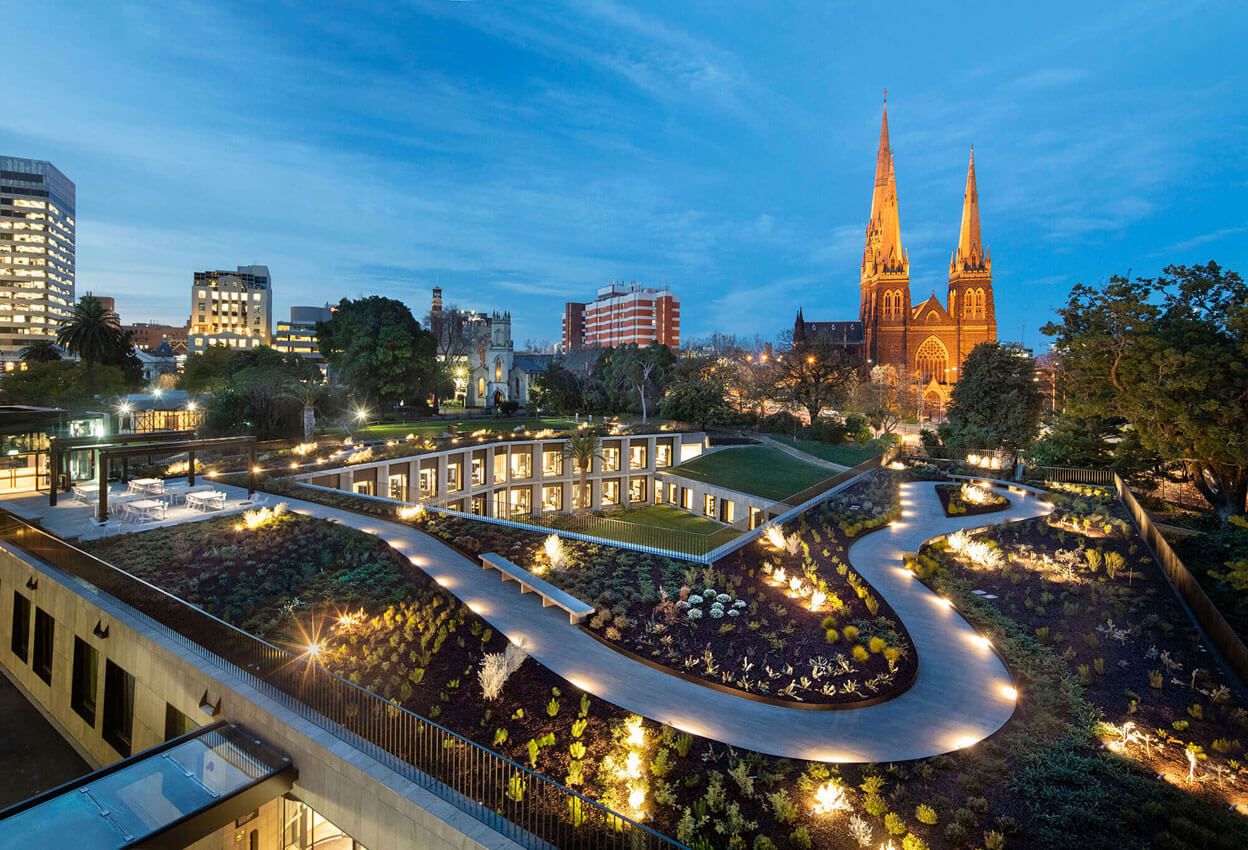
This Award is made in recognition of most distinguished services by an individual architect.
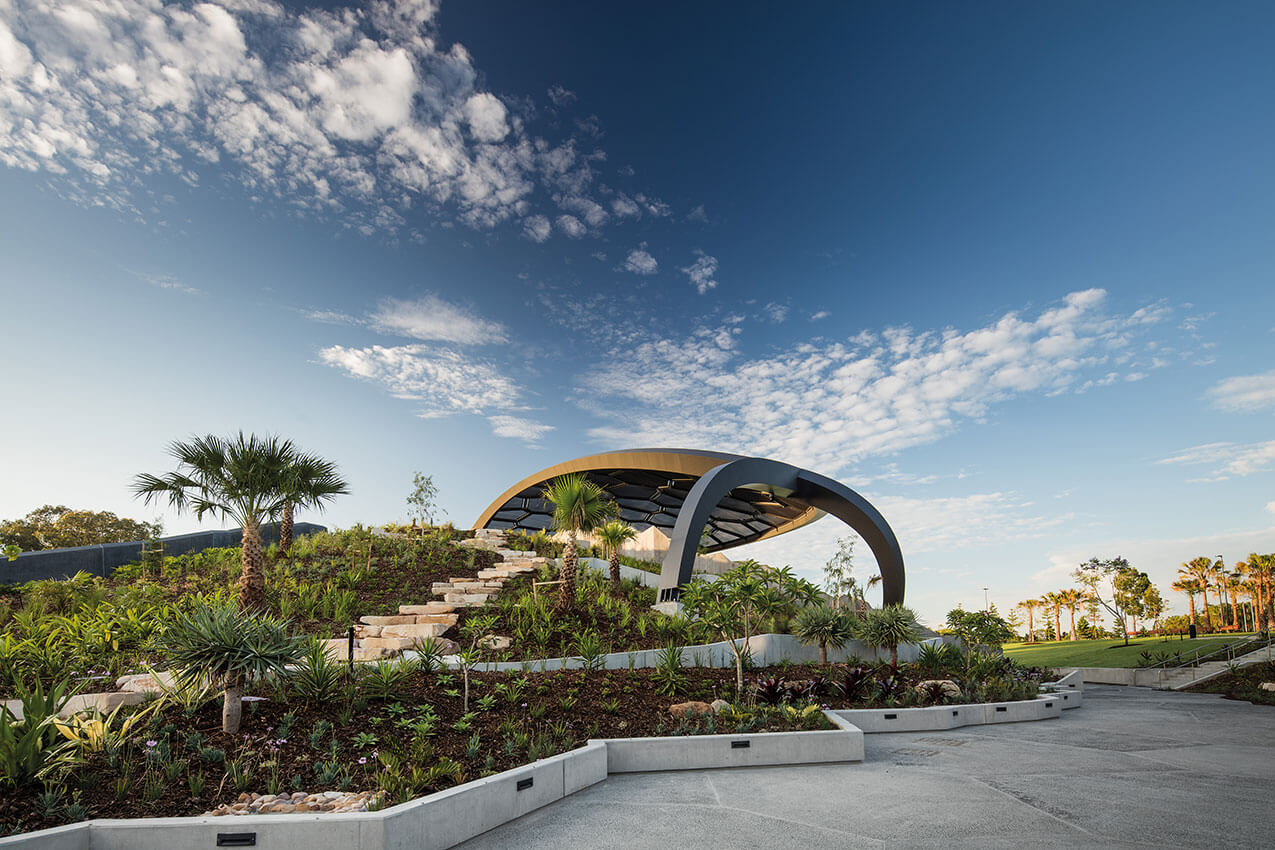
Nominations are considered by the Gold Medal Committee
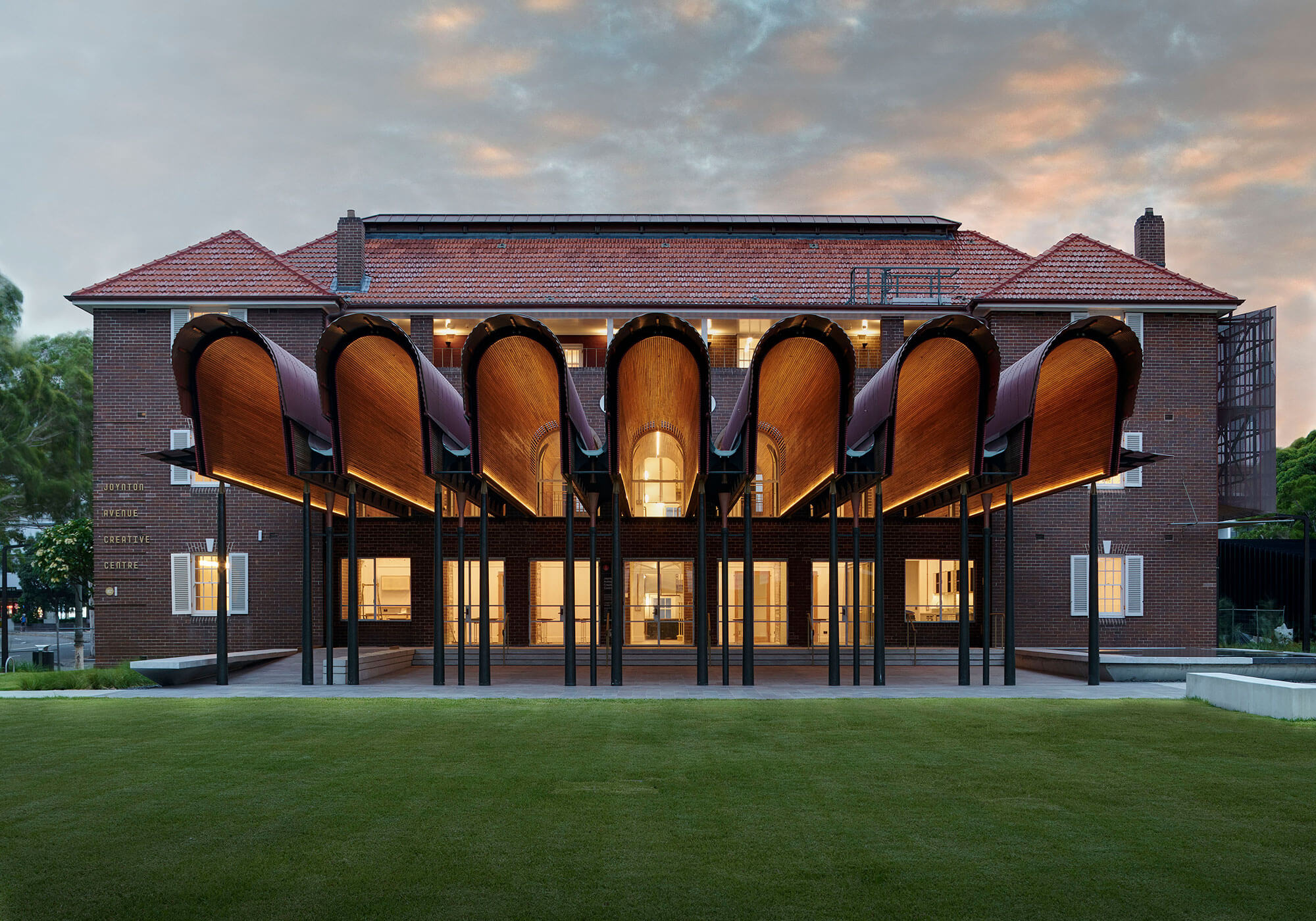
Nominations are directed to the CEO and must provide the name, biography, general history of the career and distinguished work of the nominee with evidence of their work.
Each year since 1970 the Gold Medallist has delivered the AS Hook Memorial Address.
The Australian Institute of Architects’ Gold Medal is awarded in honour of the quality and breadth of Thompson’s work, a design ethos that favours subtle expression and graciousness over force, and her propensity to address some of the biggest issues of our time.
Previous winners since 1960
GOLD MEDAL TOUR
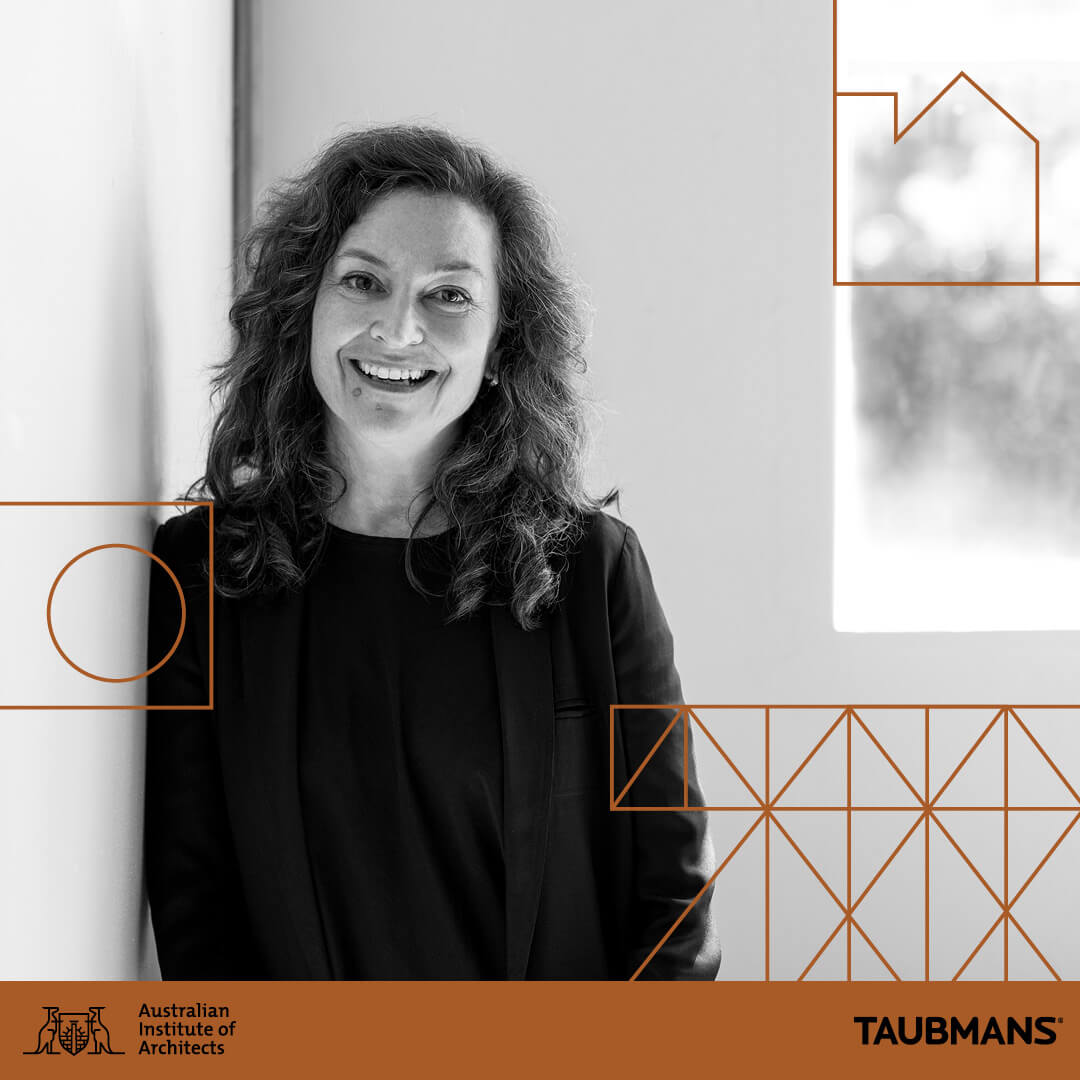
gold medal tour
Each year since 1970 the Gold Medallist has delivered the AS Hook Memorial Address. The address was named in memory of Alfred Samuel Hook.
The address provides insight into the life, work and principles of the Gold Medallist and the state of the profession at that time. The AS Hook Memorial address is traditionally the final presentation of the tour and is held in the Gold Medallist’s home state.
Presentation
The Gold Medallist travels to every state and territory, presenting a ‘show and tell’ of their works, experiences and architecture.
EmAGN Breakfasts
A fringe event is held in each capital city, for members of EmAGN (Emerging Architects and Graduates Network). The breakfast is traditionally held the morning after the Gold Medal presentation.
Partnerships
The Gold Medal Tour is supported by the Institute’s Major National Partner, Taubmans.
Tour Dates:
New South Wales – 1 August 2023
Australian Capital Territory – 2 August 2023
Northern Territory – 10 August 2023
Queensland – 15 August 2023
South Australia – 23 August 2023
Western Australia – 24 August 2023
Tasmania – 5 September 2023
Victoria – 13 September 2023
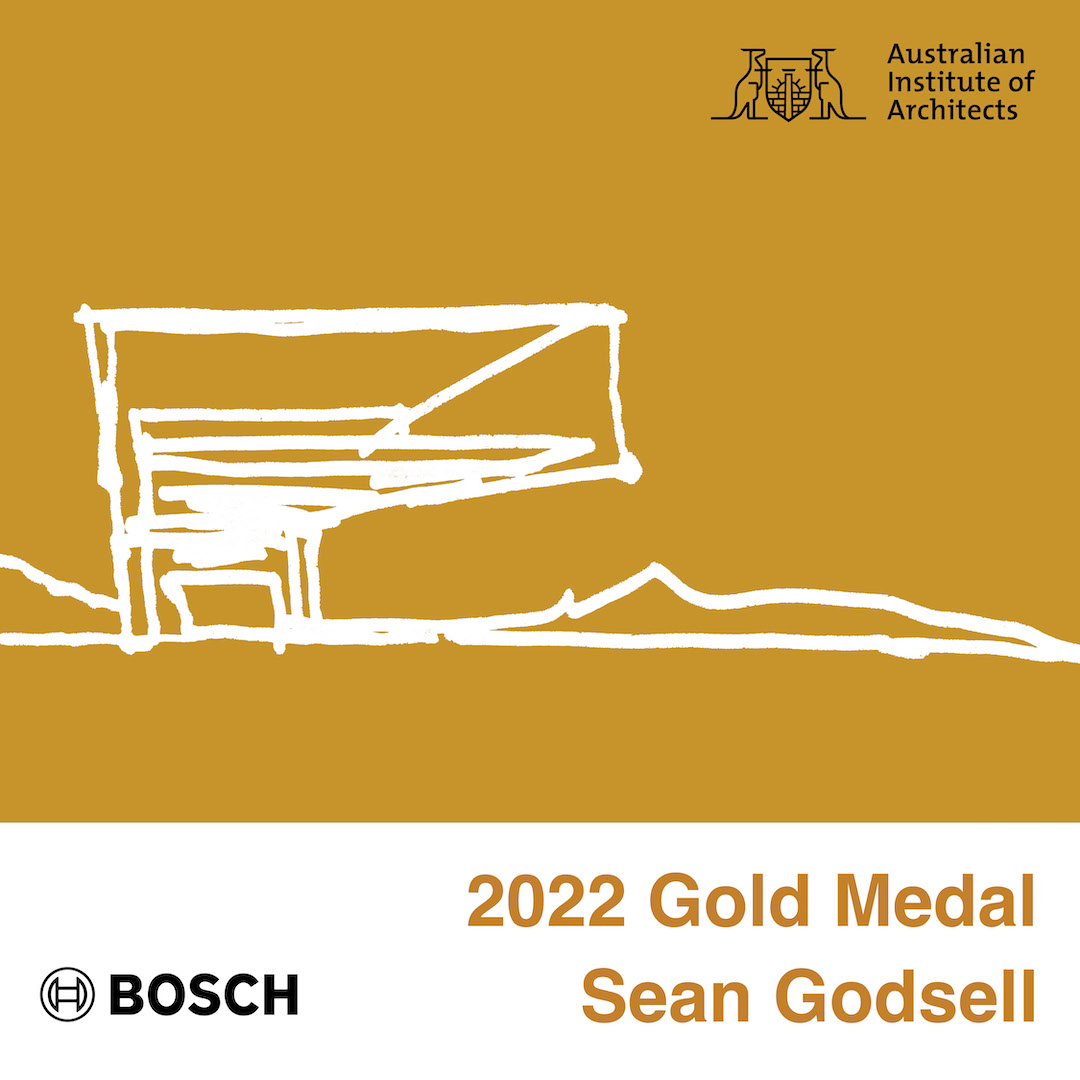
gold medal tour
Each year since 1970 the Gold Medallist has delivered the AS Hook Memorial Address. The address was named in member of Alfred Samuel Hook. The address provides insight into the life, work and principles of the Gold Medallist and the state of the profession at that time. The AS Hook Memorial address is traditionally the final presentation of the tour and is held in the Gold Medallist’s home state.
Presentation
The Gold Medallist travels to every state and territory, presenting a ‘show and tell’ of their works, experiences and architecture.
EmAGN Breakfasts
A fringe event is held in each capital city, for members of EmAGN (Emerging Architects and Graduates Network). The breakfast is traditionally held the morning after the Gold Medal presentation.
Partnerships
The Gold Medal Tour is supported by the Institute’s National Corporate Partner Bosch.
Eligibility

Who can participate
The Gold Medal is the highest honour the Institute may bestow.
The Award is made in recognition of most distinguished services by an individual architect who has designed or executed structures of high merit or produced work of great distinction to promote or facilitate the knowledge of architecture, or by work which has endowed the profession of architecture in such an exceptional or distinguished way as to merit the award.
The Gold Medal may be awarded to an Australian or foreign architect. Not more than one Gold Medal shall be awarded in any year, and the honour need not necessarily be given each year.
In exceptional circumstances, the Gold Medal may be awarded to a group of individual architects who demonstrate that they have collectively met the above criteria.
Judging criteria
Participation requirements / What we look for
Nominations are sought for excellence in the achievement of the following:
- Excellence in architectural practice, research or education
- Involvement in Australian Institute of Architects’ activities and/or forums of similar professional bodies
- Contribution to architecture through leadership within the profession
- Contribution to community activities such as charity and voluntary work related to the profession
Nominations must be made electronically and provide:
- Comprehensive biographical details
- Career history
- Evidence of distinguished work
- Australian Institute of Architects Service
- Chapter President’s citation supporting the nomination
- High resolution profile photo

How to nominate
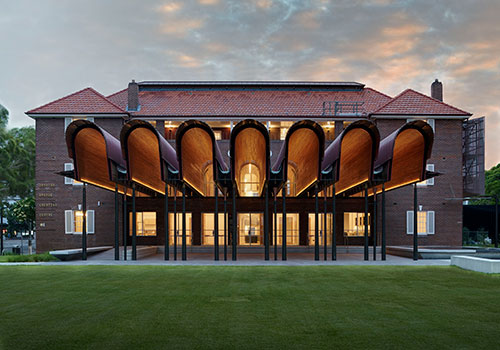
The Nomination process
Annually the Institute will call for nominations for the Gold Medal.
The National Prizes Officer shall keep a record of Gold Medal nominations including the original date received. Nominations will be considered by the Gold Medal Jury and, if considered worthy, will be added to the Gold Medal Register. Once on the register, nominations will be considered each year for five consecutive years, after which the nomination will lapse. Previous nominees may be re-nominated. The Gold Medal Register will be kept confidential. Those nominated are not guaranteed a place on the Register.
To suggest a Gold Medal nominee please contact your local Chapter.
Gold Medal nominations are submitted to the National Prizes Officer by:
- The National President
- A National Councilor
- A Chapter President
- A Chairperson of a National Committee
- National Council – signed by the President
- Chapter Council – signed by the Chapter President
- National Committee – signed by the Committee Chair
- An Area Committee – signed by the Chair
Congratulations KERSTIN THOMPSON
The Gold Medal is the Australian Institute of Architects’ highest honour. It recognizes distinguished service by architects who have designed or executed buildings of high merit, produced work of great distinction resulting in the advancement of architecture, or endowed the profession of architecture in a distinguished manner. The 2023 recipient of the Gold Medal is Kerstin Thompson.
Thompson is an outstanding architect whose design practice is renowned internationally as a significant and innovative reference point in Australian architecture and urban design. For more than three decades, she has contributed generously to architectural discourse across the country through her work as a designer, educator and highly respected keynote speaker.
Further, she has displayed dedication to the profession through extensive efforts with the Australian Institute of Architects, including “captaincy” at the 2019 National Architecture Conference, creative directorship of the 2005 National Architecture Conference, co-curatorship of Australia’s official contribution to the 2008 Venice Architecture Biennale, and participation in countless design panels and juries – all while leading her practice with a level of skill, consideration and aesthetic to which many aspire.
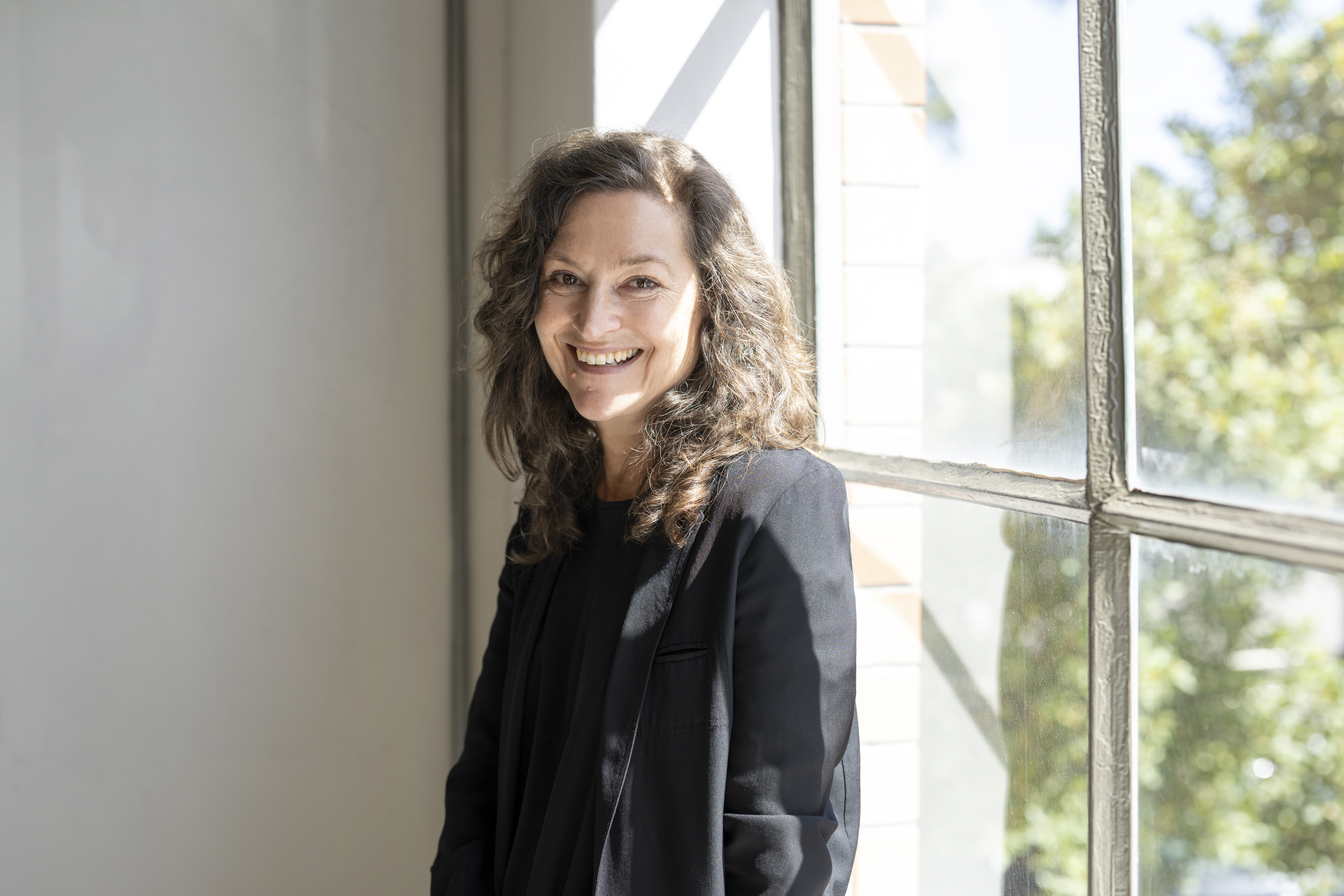
Spanning varying scales, from large public projects to intricate domestic architecture, Thompson’s sublime work is at once generous, bold and highly nuanced. Taking its cues from the context, it creates a built form that allows the setting to take centre stage. Thompson employs a sleight of hand that makes every moment one of discovery: at Bundanon, the landscape is amplified, while at the Victorian College of the Arts, heritage takes on a newfound vibrancy. Her interventions are taut and beautiful in their own right, delivering a sense of wonder and inquisition to even the most experienced of her peers.
Integrating sustainable principles and a multidisciplinary approach to architecture, Thompson’s work is framed by a deep understanding of ecology and landscape. She has set precedents in her determination to extend the useful life of existing buildings. Finally, the distinctive economy and lean sensibility of her designs highlight the value and beauty of finite resources.
In the field of heritage architecture, Thompson’s work is particularly notable in the inventive ways that it addresses memory and establishes resonance between old and new. The Melbourne Holocaust Museum employs a finely detailed yet infinitely simple recessed line to circumscribe the historic building; a line has never worked so hard, and yet appeared so effortless, in carrying the immense burden of joining old with new. Internally, the building’s focus on light serves to keep memory alive, so that society might never forget the lessons of the past.
Thompson is the creative design director across all projects at Kerstin Thompson Architects (KTA). The practice itself is an exemplar studio that has encouraged young practitioners to venture out and shape new practices around strongly slated principles. Thompson founded KTA after formative experiences at Melbourne practice Robinson Chen, commencing with a series of residential commissions. These were immediately recognized as assured, inventive and part of the continuum of Melbourne’s residential architecture scene established generations earlier.
KTA’s contribution to the architectural fabric of our built environment has been recognized by numerous awards at state, national and international level. The practice was the recipient of the 2020 Victorian Architecture Medal, the state’s highest honour and a recognition of excellence across all award categories, for the Broadmeadows Town Hall project; KTA is the first practice with a sole female founder to have been awarded the medal. In 2022, KTA was awarded the Sir Zelman Cowen Award for Public Architecture for Bundanon Art Museum and Bridge, a project involving new site-wide works that are equal parts subtle and dramatic, preserving and transforming. The works, which show how architecture can be used to provide pathways out of the current state of climate crisis partially brought about by our built environment, was also awarded a National Award for Sustainable Architecture.
The Australian Institute of Architects’ Gold Medal is awarded in honour of the quality and breadth of Thompson’s work, a design ethos that favours subtle expression and graciousness over force, and her propensity to address some of the biggest issues of our time. Through her work in academia and as a role model for women everywhere, she is an inspiration to the profession as a whole and to future generations of architects.
Jury:
Shannon Battisson FRAIA (Chair) – National President | Director of Architecture, The Mill: Architecture + Design
Tony Giannone LFRAIA – Director, Tectvs
Julie Eizenberg LFRAIA – Founding Principal, Koning Eizenberg
John Wardle LFRAIA – Partner, Wardle
Hank Koning LFRAIA – Founding Principal, Koning Eizenberg
Congratulations Sean Godsell
The Gold Medal is the Australian Institute of Architects’ highest honour. It recognizes distinguished service by architects who have designed or executed buildings of high merit, produced work of great distinction resulting in the advancement of architecture, or endowed the profession of architecture in a distinguished manner. The 2022 recipient of the Gold Medal is Sean Godsell.
Godsell’s body of work, publications, exhibitions, and speaking and teaching engagements have been accoladed in Australia. But for a small practice that has completed a relatively small number of dedicated projects, his level of international recognition is unparalleled. Godsell’s work has contributed significantly by expressing, on a global stage, an architectural response to Australia’s unique landscape.
Godsell was born in Melbourne in 1960 and graduated with first-class honours from the University of Melbourne in 1984. He spent much of 1985 travelling in Japan and Europe, and worked in London for Denys Lasdun from 1986 to 1988. In 1989, he returned to Melbourne and, in 1994, formed Godsell Associates Pty Ltd Architects.
He obtained a master’s degree in architecture from RMIT University in 1999, with a thesis titled “The appropriateness of the contemporary Australian dwelling.” His work has been published in many of the world’s leading architectural journals, including The Architectural Review (UK), Architectural Record (US), Domus and Casabella (Italy), A+U and GA Houses (Japan), Detail (Germany), Le Moniteur (France) and Architect (Portugal).
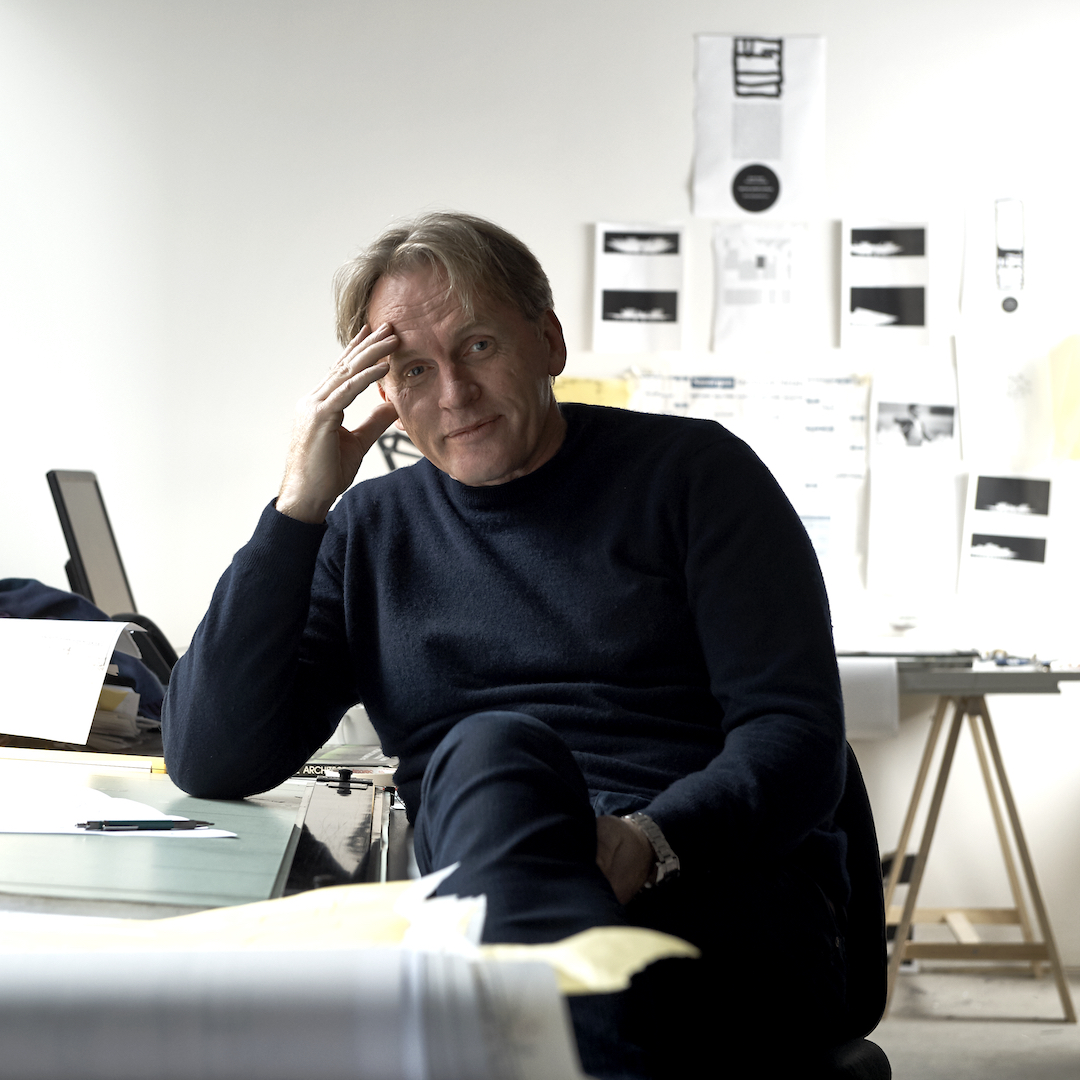
In 2003, Godsell received a citation from the president of the American Institute of Architects for his work for the homeless. His Future Shack prototype was exhibited from May to October 2004 at the Smithsonian Institute’s Cooper Hewitt Design Museum in New York. He has lectured in the US, the UK, China, Japan, India, France, Italy and New Zealand as well as across Australia, and was a keynote speaker at the Alvar Aalto Symposium in Finland in July 2006.
In 2008, Kenneth Frampton nominated Godsell for the inaugural BSI Swiss Architectural Award for architects under the age of 50 and his work was exhibited in both the Milan Triennale and the Venice Biennale in the same year.
In 2013, the influential Spanish publication El Croquis published the monograph Sean Godsell – Tough Subtlety. In 2013 and 2014, he was visiting professor at the IUAV WAVE workshop in Venice, and he delivered the UNESCO Chair Open Lecture in Mantova, Italy. Godsell received the 2016 Detail Prize in Germany for the 2014 MPavilion. In 2018, he received a Papal Silver Medal for his Vatican Chapel on the island of San Giorgio Maggiore in Venice. The same year, through invitation, Godsell spoke in the US at the New Caanan Historical Society, the New York Architectural League and Yale University School of Art and Architecture.
Godsell’s architecture reflects an Australian architect responding to a deeply moral and territorial ethos. It is as unwavering as it is singular. His projects constitute an assembly of intricate detail, free of expectation. His work is at once personal, rigorous and relevant, and each project is envisioned from its specific context.
The essence of this citation is best summed up in the words of Philip Goad and his reference to Godsell’s residential work in the 2019 Thames and Hudson monograph Sean Godsell: Houses:
… the nine houses featured in this book become almost totemic – symbolic or representative of a spatializing of how one might want or hope to live in one of the oldest countries but newest nations in the world. That is a bold statement, but then equally bold is the relentless, headstrong search for perfectible form and space that Godsell continues to undertake with near eremitic persistence … It is not an easy path when following such a singular goal.
Godsell’s work defines an extraordinary commitment to excellence in design, detail and resolution, allowing us to experience the expression of an intense master craftsman. To achieve all of this in his practice timeframe is an extraordinary achievement that should be recognized, lauded and celebrated.
Congratulations, Sean.
Jury
Tony Giannone FRAIA (Chair) – National President | Director, Tectvs
Alice Hampson LFRAIA – Director, Alice Hampson Architect
David Karotkin LFRAIA – Managing Director, Carabiner
Camilla Block LFRAIA – Director, Durbach Block Jaggers Architects
John Denton LFRAIA – Director, Denton Corker Marshall
Gold Medallists 1960 - 2023
2023 Kerstin Thompson
2022 Sean Godsell
2021 Donald Watson
2020 John Wardle
2019 Hank Koning and Julie Eizenberg
2018 Alec Tzannes
2017 Peter Elliott
2016 Stephen Ashton, Howard Raggatt and Ian McDougall
2015 Peter Stutchbury
2014 Phil Harris and Adrian Welke, Troppo
2013 Peter Wilson
2012 Lawrence Nield
2011 Graeme Gunn
2010 Lindsay and Kerry Clare
2009 Ken Maher
2008 Richard Johnson
2007 Enrico Taglietti
2006 Kerry Hill
2005 James Birrell
2004 Gregory Burgess
2003 Peter Corrigan and Maggie Edmond
2002 Brit Andresen
2001 Keith Eric Cottier
2000 John Neville Morphett
1999 Richard Leplastrier
1998 Gabriel Poole
1997 Roy McCowan Simpson
1996 John Denton, William Corker, Barrington Marshall
1995 no award
1994 Neville Quarry
1993 Kenneth Frank Woolley
1992 Glenn Marcus Murcutt
1991 Donald Campbell Rupert Bailey
1990 Professor Peter McIntyre
1989 Robin Findlay Gibson
1988 Romaldo Giurgola
1987 Daryl Sanders Jackson
1986 Richard Butterworth
1985 Richard Norman Johnson
1984 Philip Sutton Cox
1983 Gilbert Ridgway Nicol and Ross Kingsley Chisholm
1982 Sir John Wallace Overall
1981 Colin Frederick Madigan
1980 John Hamilton Andrews
1979 Harold Bryce Mortlock
1978 Mervyn Henry Parry
1977 Ronald Andrew Gilling
1976 Harry Seidler
1975 Sydney Edward Ancher
1974 Raymond Berg
1973 Jorn Utzon
1972 Edward Herbert Farmer
1971 Frederick Bruce Lucas
1970 Jack Hobbs McConnell
1969 Robin Boyd
1968 Sir Roy Grounds
1967 William Purves Race Godfrey
1966 William Rae Laurie
1965 Sir Osborn McCutcheon
1964 Cobden Parkes
1963 Sir Arthur Stephenson
1962 Joseph Charles Fowell
1961 Louis Laybourne-Smith
1960 Leslie Wilkinson
2021 Gold Medal
Congratulations Don Watson
The 2021 recipient of the Australian Institute of Architects Gold Medal, Donald (Don) Robert Watson, stands as a perfect antidote to much that has been exhausting and difficult in 2020.
The jury’s unanimous decision recognises Watson’s comprehensive contribution to architecture since he graduated from The University of Queensland (UQ) in 1970. For contemporary Australian architecture the term “Renaissance man” may well be outdated, but it captures Watson’s remarkable prowess across the diverse areas of architectural agency.
As a design architect, Watson’s built work traverses scales, typologies, and public and private commissions. He has received the highest accolades of peer and public review: 26 national and state Institute awards and commendations across eight categories. Initially, Watson’s practice career was nourished by exposure to a wide range of projects: in regional Queensland and Papua New Guinea; with James Birrell and, later, Geoffrey Pie and Associates in Brisbane; and a year in the UK. His arresting op- art treatment of the T. C. Beirne Building facade and supergraphics interiors at Brisbane airport’s international terminal led to an Australia Council study grant. In 1989, after 15 years balancing sole practice, National Trust consultancies and part-time lecturing at UQ, Watson came to national prominence when his Campbell House won the Robin Boyd Award for Residential Architecture. Ever self- effacing, Watson had not formally entered his masterful hybrid design, yet the jury members were so moved that they were “unanimous in their desire not to leave.” That same year, Watson embraced a radically different portfolio, joining the Queensland Department of Public Works where, over the next 15 years, he designed 11 TAFE buildings throughout South East Queensland. Architectural historian Janina Gosseye describes these works as “witty and wise … among the finest examples of postmodernism in Queensland.”
Watson’s expressive handling of these demanding public projects is the result of a forensic reading of the historical architectural languages of his context. As a researcher, Watson has been a seminal figure in our understanding of the constructed world – from the iconic “Queenslander,” to windmills and railway carriages – and has been recognized as Queensland’s foremost architectural historian, receiving the most esteemed awards in the field: the National Trust John Herbert Memorial Award (1995); Life Member, Society of Architectural Historians of Australasia and New Zealand (2008); and the John Oxley Library Fellowship (2012).
His research publications are the foundation for historical studies in the state, and have opened the door for contemporary practitioners to design informed, contextually responsive architecture. Watson’s long association with UQ has also opened doors for a generation of Queensland architects. Even those not taught by him directly owe some part of their design consciousness to Watson’s inspiration. As an educator, he enabled students to discover the strength of their own ideas rather than imposing his own, and he is an inspiring – if exhausting – model to his colleagues. “He made us look really lazy!” quips an ex-colleague affectionately in the mini-film made for the 2018 Institute exhibition Don Watson: A Civil Servant.
His services to the Institute, the profession and the public have been generous and strategic, encompassing heritage advice, public exhibitions and curated lecture series, as well as ongoing advocacy for the preservation of architectural works, archival and built. Watson’s philanthropic promotion of architecture to the broader community has been honored with additional prestigious awards: Life Fellowship of the Australian Institute of Architects (2010) and an Honorary Doctorate from UQ (2013).
Watson likes the idea that buildings carry meanings and are not just abstract. He prefers, in Robert Venturi’s terms, “the difficult whole,” where unity comes from inclusion rather than the easy unity of exclusion. Clearly evident in the rich programmatic layering, complex geometries and expressive detailing of his built work, this approach applies equally to his career. With his polymath’s appetite for involvement in every kind of architectural enterprise (often simultaneously), he has synthesized the entirety of professional considerations into one wonderfully synchronous, humanist endeavour. Except that far from difficult, he has made it look easy, with great humour and humility (and occasional recourse to appropriately colourful Queensland language).
In conferring the 2021 Gold Medal on Donald Watson, the Australian Institute of Architects celebrates a lifetime of insightful, inventive and exemplary practice.
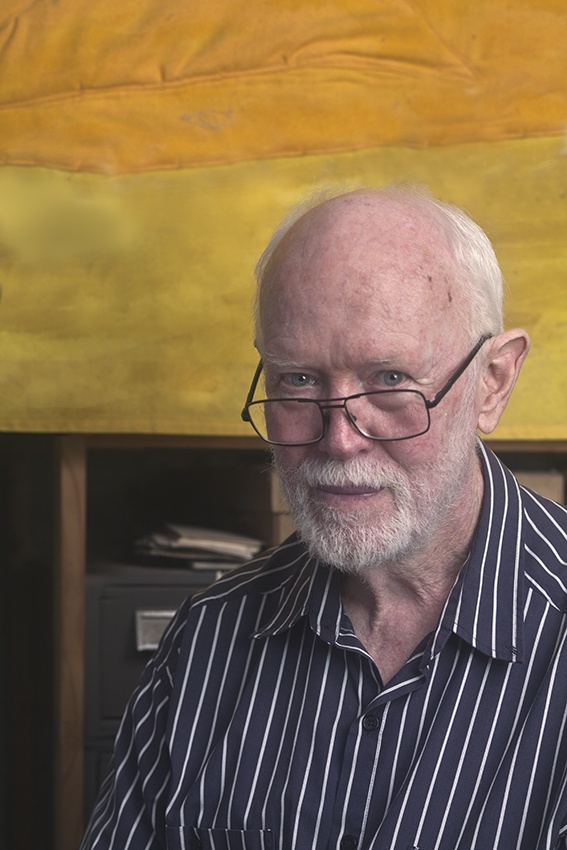
2020 Gold Medal
Congratulations John Wardle
John Wardle is an architect’s architect. He is a designer of consummate skill, whose works, from the smallest intricate piece of joinery to complex high-rise buildings receive detailed attention and conscientious formal experiment. His works celebrate both individual craft and the broader production processes of making a building. His works re-position the role of the architect as chief designer in the process of making a building. His works are the outcome of a studio-based collaborative practice.
Since the formation of his Melbourne-based practice in 1986, John Wardle has devoted his energies to maintaining the design ethos of the small office to ever larger institutional and commercial projects across the country. His early practice was built upon the design of single-family houses such as the Kitamura house, Kew (1995) and Isaacson-Davis house, Balnarring (1997) whose external forms, interiors and joinery rejoiced in the pleasures of creating place, spatial delight and exquisitely resolved detail. At the same time, Wardle commenced a long and productive association with institutional clients, CSIRO and the Salvation Army, designing, on the one hand, laboratories and research facilities and on the other, low-budget low-income residential accommodation. As a result, Wardle and his office developed considerable expertise in responding to programs and client bodies of considerable complexity, while at the still delivering projects of considerable architectural design integrity.
More than three decades of honing skills to address often competing agendas, purposefully and cogently, with the ongoing support and development of a studio-based office of committed staff at every level, has meant that John Wardle has created a practice of national stature and international repute; a practice where design excellence takes the prime position in every single project and at every scale.
In the last decade, Wardle’s institutional and commercial buildings have reasserted architecture form at the city scale. The Urban Workshop (2000-07) and the Nigel Peck Centre for Learning and Leadership (2004-2007) in Melbourne, the Kaurna Building (2002-05) in Adelaide, and the Queensland Brain Institute (2004-2007) in Brisbane, and the Jane Foss Russell Building in Sydney (2009) exemplify the national impact of Wardle’s personal project of raising the public status of architectural design. His public buildings have become exemplars of quality for institutional and commercial patrons.
Wardle’s domestic projects too are of note, continuing the great Australian tradition of the single-family house as the architect’s laboratory for experiment and innovation. His iterative design process is an exemplar for students of architecture. His collaborations with artists and craftspeople comprise a practice of mutual enrichment not only for the built environment but also for each contributing discipline.
Evidence of consistent peer recognition over more than 30 years reinforces the view of John Wardle as an architect whose contribution to the development of Australian architecture has been distinguished and substantial. His practice has been the recipient of numerous state Institute awards for architectural excellence in Victoria, South Australia, and Queensland as well as numerous awards at the national level.
In Victoria, Wardle is a two-time winner of the Victorian Architecture Medal (1997 and 2008), the state’s highest accolade. He has won the Harold Desbrowe-Annear Award for residential architecture three times (1995, 1997 and 2004), the Sir Osborn McCutcheon Award for commercial architecture twice (1997 and 2006), and the William Wardell Award for public buildings twice (2000 and 2008).
At a national level, he has twice been the recipient of the Sir Zelman Cowen Award for Public Buildings (2002 and 2006), the Robin Boyd Award for Residential Architecture twice (2012 and 2013) as well as the inaugural Daryl Jackson Award for Educational Architecture (2015). Such acknowledgement of design excellence demonstrated across a range of building types and geographic locations is further evidence of the deserved peer respect for the dexterity of his formal compositions, his programmatic innovations as well as his engagement with residential, institutional and commercial clients.
John Wardle is an outstanding Australian architect who maintains an exemplary practice. Across the nation he has restored faith in what architects do best – the design of buildings that function well and please hand and eye. He is a most worthy candidate for the award of the Gold Medal, the highest accolade of the Australian Institute of Architects.
